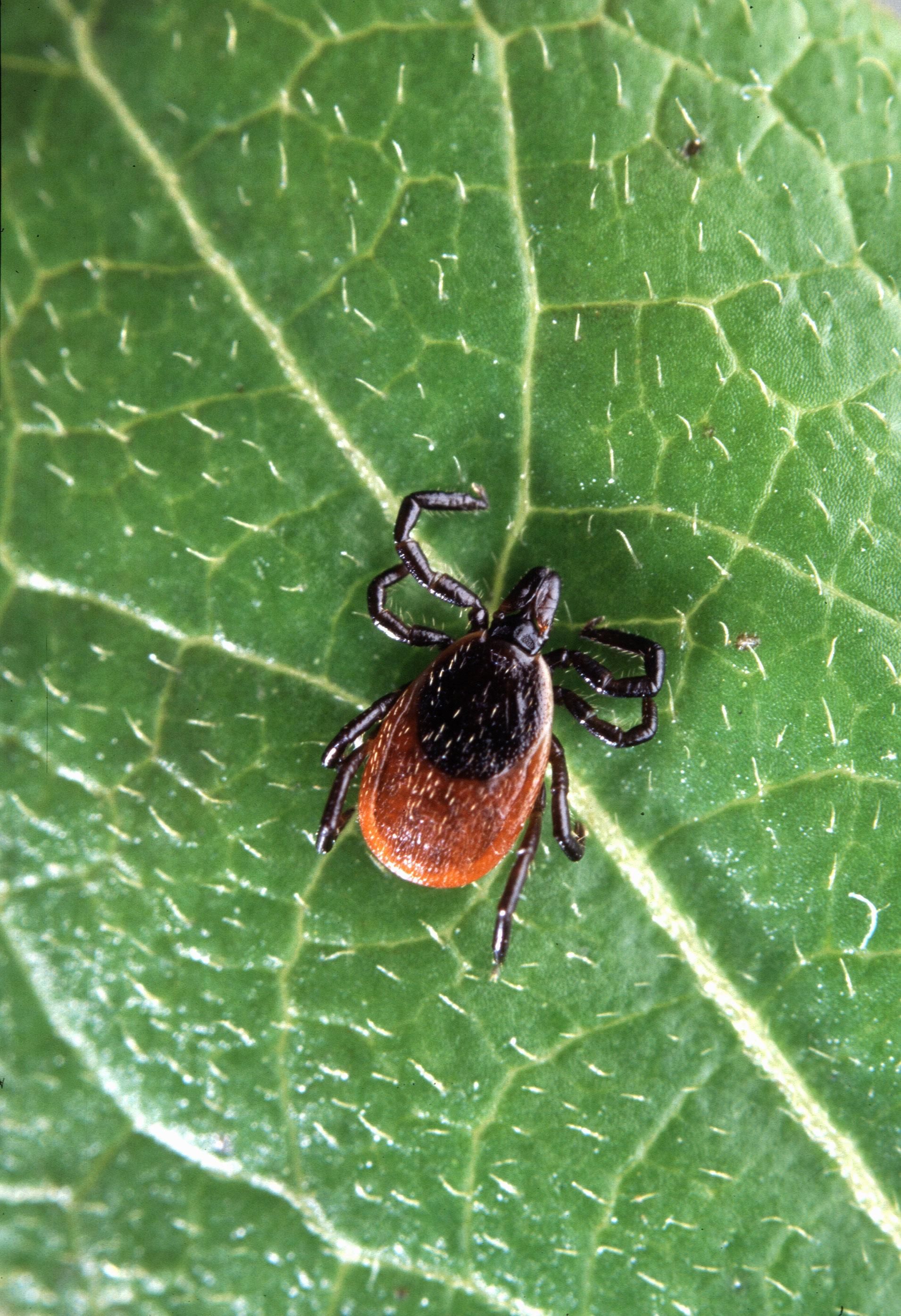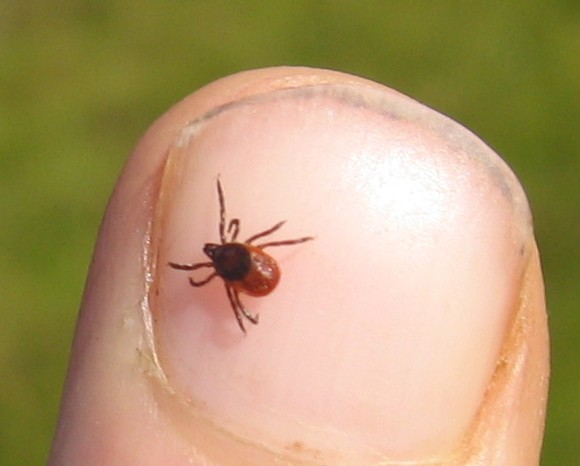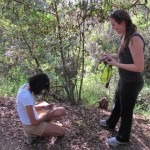When my mom said she was headed to the doctor for a sore knee last month, I didn’t think much of it. I figured she probably just twisted it doing yard work or something. But, when she called back to say her swollen knee was Lyme arthritis, she had my attention. And I braced myself for the dizzying world we were about to walk into.
Lyme is one of those diseases you almost can’t mention in mixed company – unless you want to pick a fight. It exists in a world where patient advocate groups distrust the medical community; where advocate-backed legislation rather than clinical evidence defines treatment options; where seemingly ordinary doctors practice “alternative” medicine; and where a long standing disease has no settled diagnostics, treatment, or even definition.
Since scientists identified it in Lyme, Connecticut in 1975, it has become the most common tick-born disease in North America. Lyme disease is endemic to the Northeast and the Pacific coast, and it’s spreading. Disease ecologists consider it a high priority emerging infectious diseases.
Yet, nearly everything else about it is hotly contested.
Last fall, in the medical journal The Lancet, a group of doctors equated people who believe in “chronic Lyme disease” to people who deny the existence of AIDS (1). On the other side, patient advocate groups, such as the Lyme Disease Association, disagree with standard medical guidance set by the Infectious Disease Society of America (IDSA), and endorsed by the Centers for Disease Control and Prevention. Many have pushed (successfully) for laws that protect patients and doctors who believe in chronic illness and don’t follow standard treatments.
To say the least, the divide is unfortunate, says Dr. Robert Lane, a leading tick-born disease expert and epidemiologist at UC Berkeley. “I think that both sides want to get to the truth,” he says.
Part of the controversy stems from Lyme disease’s vague start. Nymph ticks the size of poppy seeds or slightly larger adults can deliver the spiral bacteria, Borrelia burgdorferi, to skin, where they mount their attack. The result might be the famous bulls-eye rash. But, advocate groups claim that as little as 30 percent of infected people will have/see this rash. While doctors who side with CDC guidelines say as much as 80 percent will have/see it. My mom didn’t even notice a tick.
After that, things get fuzzier. Early Lyme disease symptoms include fatigue, headache, fever, and depression. If you miss those super obvious signs, the bacteria invade the body, and launch late stage disease. This can fire up months to years later as fatigue, joint pain (Lyme arthritis), mental fogginess, and sometimes even heart and liver problems. For some patients, it can be a slow road to a proper diagnosis, where relationships with doctors erode along the way.
It doesn’t help that many advocate groups believe that standard tests for Lyme—ELISAs and Western blots—are wildly inaccurate. An ELISA measures the bacteria’s presence indirectly, by detecting antibodies—your immune system’s response to the infection. Advocate groups claim that immune responses fluctuate, and are unreliable. Western blots, which also detect antibodies, may miss dormant infections, they also claim. Ultimately, advocacy groups—one of the most vocal is the California based LymeDisease.org—feel that Lyme disease is under-diagnosed. Some patients with similarly vague symptoms believe they have the disease without positive diagnostics.
Members of the IDSA, which is comprised of over 9000 physicians, scientists and health care professionals, acknowledge that no test is perfect and that the ELISA test may not be accurate in the first few weeks of infection (before your immune system mounts a response). But they point to clinical data validating its use for diagnosis (2, 3). ELISAs are also a common diagnostic tool for many other infections, including West Nile virus and HIV.
However it happens, once someone is diagnosed with Lyme, the IDSA recommends (4) two weeks of an oral antibiotic, such as doxycycline or ceftriaxone, for early disease. It’s a four-week course for late stage. When my mom got her diagnosis, she immediately went on a 28-day course of doxycycline and started feeling better. But a week after she finished, she felt run down and her headaches returned.
This is where things get crazy. The IDSA would say she may just have residual symptoms, and, at most, should try another four weeks of antibiotics. Patient advocate groups say she may need antibiotics for *six months to multiple years* and that her disease could be chronic.
In multiple double blind, randomized clinical trials, long-term antibiotic therapies did not improve symptoms or the rate of recovery (5,6,7).
When I contacted the California Department of Public Health for their opinion on chronic Lyme disease, they said they had no comment.
Some doctors who believe in chronic infection support unsafe “alternative” treatments such as injections of toxic dinitrophenol, which is banned in the U.S. Such doctors call themselves Lyme Literate MDs. LLMDs are difficult to separate from infectious disease specialists who treat Lyme disease within standard protocols. In fact, to identify a LLMD, you usually have to go through patient advocate group that will give you a referral after you sign up on their website. Moreover, many LLMDs have conflicts of interest with laboratories that produce alternative tests, or have sanctions by medical licensing boards, or been in trouble with federal agencies (8,9,10). In 2008, a Kansas state court found an LLMD guilty of killing a Lyme patient with bismuth injections (11).
“[The LLMDs] are very clandestine— for good reason,” says Dr. Paul Auwaerter, a Lyme disease specialist at Johns Hopkins and the lead author on The Lancet opinion piece. At his clinic, most of the patients that come in with a chronic Lyme disease diagnoses never even had Lyme disease. Rather, they were suffering from something else, he says.
In the Northeast, where over 90 percent of Lyme disease cases are diagnosed, less than 3 percent of doctors used chronic Lyme disease as a diagnosis.
Right now, my mom is waiting for her next appointment with an infectious disease doctor (not a LLMD, I checked). She may be in the 5 percent pool of patients that need another round of antibiotics, or may just get something to treat her symptoms. Either way, she’ll get some bug spray—from me—for the next time she does yard work.









Comments are closed.